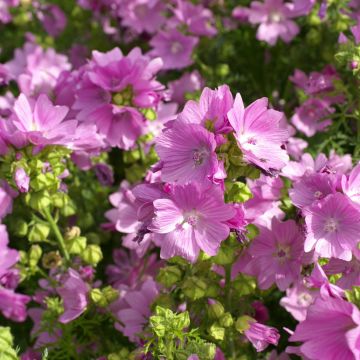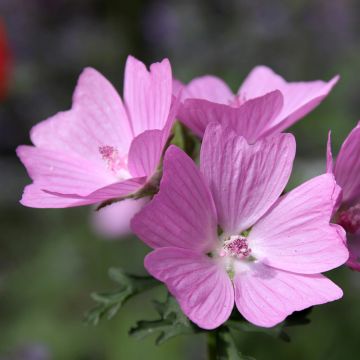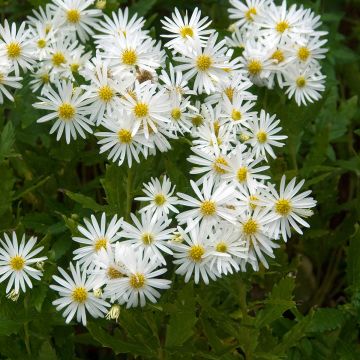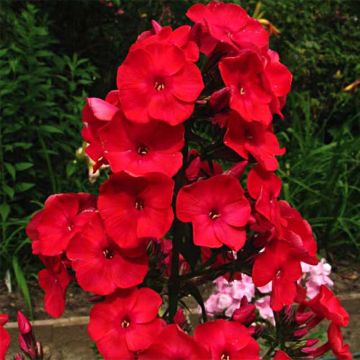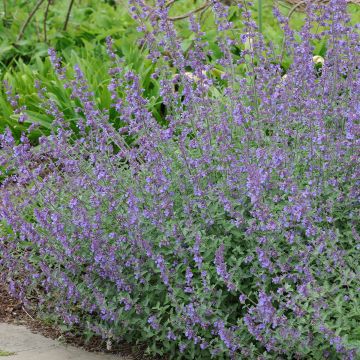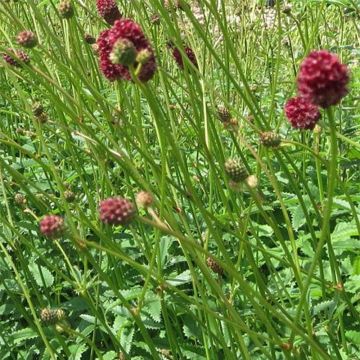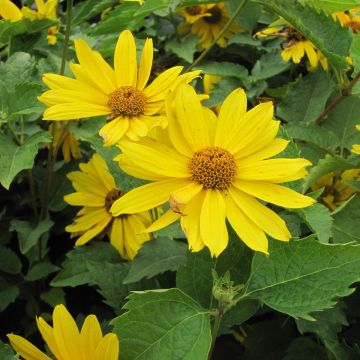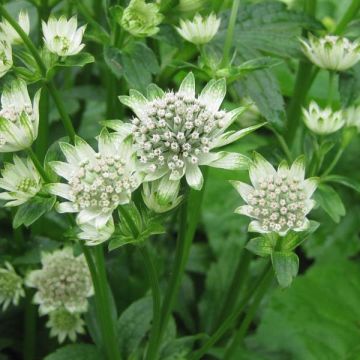

Malva sylvestris - Mallow


Malva sylvestris - Mallow


Malva sylvestris - Mallow
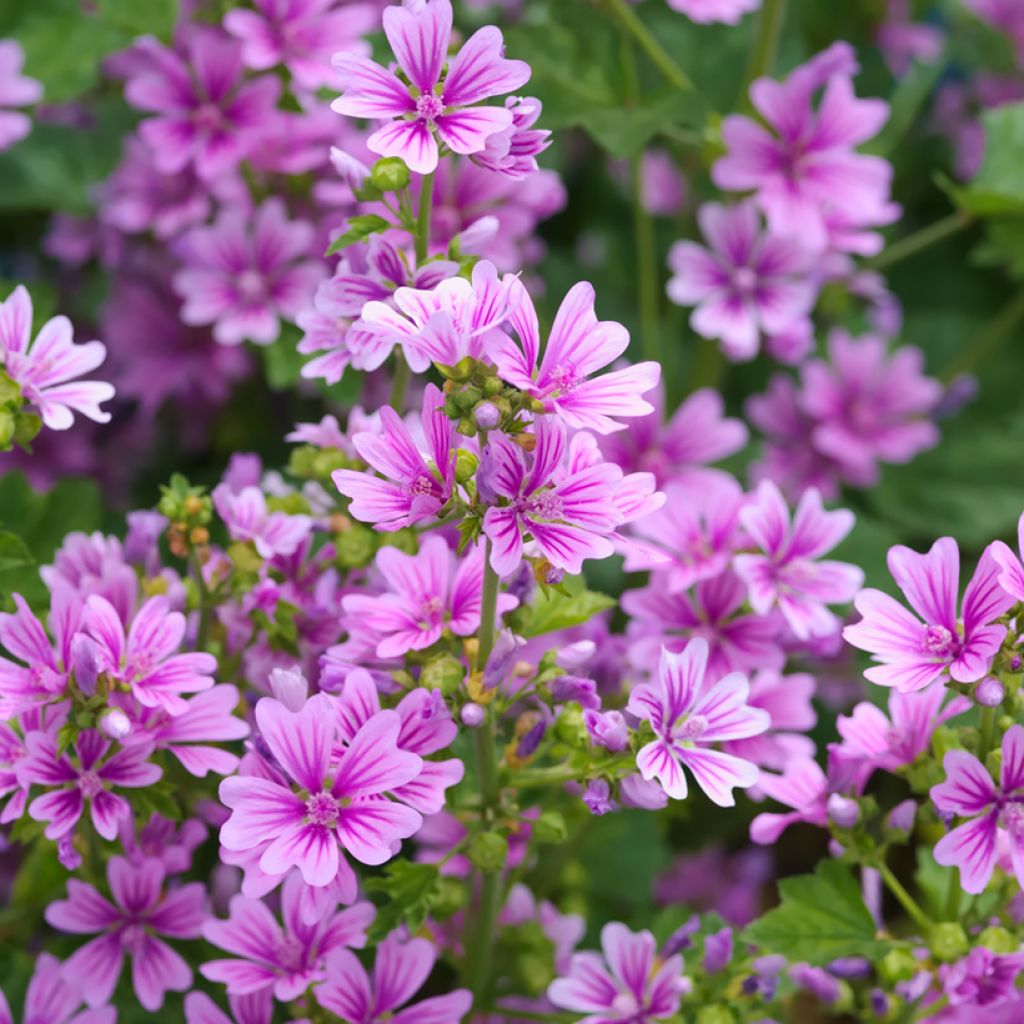

Malva sylvestris - Mallow


Malva sylvestris - Mallow


Malva sylvestris - Mallow
Malva sylvestris - Mallow
Malva sylvestris
Common Mallow, Cheese Flower, High Mallow, Hock, Marsh Mallow
The plant was a bit puny in the first year, but the weather didn't help. This summer, it looks splendid! I hope it will self-seed...
Giles, 13/09/2024
This item cannot be shipped to the selected country
Delivery charge from €5.90
More information
Schedule delivery date,
and select date in basket
This plant carries a 12 months recovery warranty
More information
We guarantee the quality of our plants for a full growing cycle, and will replace at our expense any plant that fails to recover under normal climatic and planting conditions.
From €5.90 for pickup delivery and €6.90 for home delivery
Express home delivery from €8.90.
Does this plant fit my garden?
Set up your Plantfit profile →
Description
Malva sylvestris, also known as common mallow or high mallow, is a native medicinal plant that has been cultivated in gardens for a long time. In theory, it is a perennial plant, but it behaves like a biennial in temperate regions. It quickly forms large flowering clumps from spring until the end of summer. Its pretty pinkish-mauve flowers are streaked with purple. Plant it with other wildflowers in a cottage garden or naturalistic-inspired garden.
The common mallow belongs to the Malvaceae family, just like lavateras, hibiscus, and rose mallows. It is a characteristic species of European fallow lands in xerophilous environments, meaning hot and dry habitats. It is naturally found in clay-limestone soils, along paths, fences, embankments, and old walls. Long dry summers do not bother this mallow at all. It is an indicator plant of current or former human presence. It rarely lives more than three or four seasons, but it reseeds very easily.
Malva sylvestris, a fast-growing plant, develops many hairy, straight or prostrate stems, which are woody at the base and well-branched. Together, they form a clump reaching 80 to 90cm (32 to 35in) in height. Its slightly shiny dark green leaves are rounded and divided into 5 shallow lobes, 4 to 8cm (2 to 3in) wide. The plant blooms from May-June until the end of September. The flowers, 4 to 6cm (2in) in diameter, are gathered in clusters in the axils of the leaves and have 5 notched petals. They are pink-mauve with dark purple streaks. As they fade, the petals turn bluish-purple. After pollination by insects, small circular fruits called 'cheeses' form, hence the vernacular name 'cheese flower'.
Mallows thrive in most soils and require very little maintenance, making them great allies for beginner gardeners. Mallows should be exposed to sunlight or partial shade. They tolerate limestone soils perfectly. Common mallow will perfectly blend with penstemons, yarrows, catmints, and lady's mantles.
Report an error about the product description
Malva sylvestris - Mallow in pictures
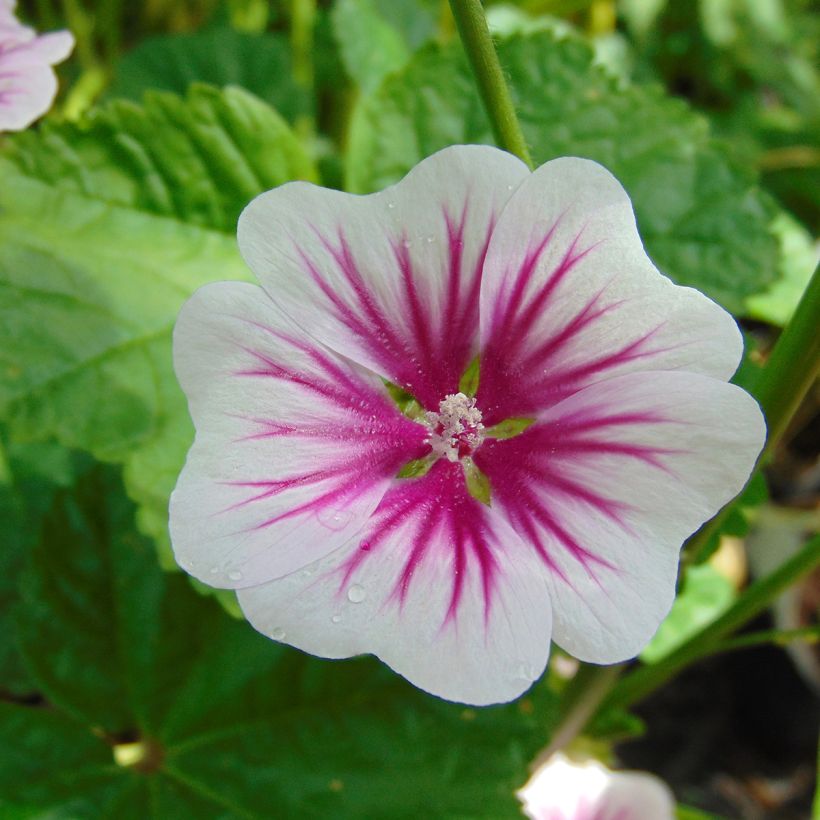



Flowering
Foliage
Plant habit
Botanical data
Malva
sylvestris
Malvaceae
Common Mallow, Cheese Flower, High Mallow, Hock, Marsh Mallow
Western Europe
Other Purple Malva - Mallow
Planting and care
Malva sylvestris can be planted in full sun or partial shade, in well-prepared ordinary soil. In warm regions, it thrives perfectly in very clayey and compact soils (where it grows spontaneously). In wetter regions, it prefers well-drained soil. Limestone is not a problem, quite the opposite. It adapts very well to coastal areas. A wild plant that is easy to adapt, but with average hardiness (especially in humid climates), compensated by a strong propensity to self-seed. Prune it in spring to promote its growth.
Like many plants in the Malvaceae family, it is sometimes prone to rust in humid climates.
Planting period
Intended location
Care
-
, onOrder confirmed
Reply from on Promesse de fleurs
Summer flowering perennials
Haven't found what you were looking for?
Hardiness is the lowest winter temperature a plant can endure without suffering serious damage or even dying. However, hardiness is affected by location (a sheltered area, such as a patio), protection (winter cover) and soil type (hardiness is improved by well-drained soil).

Photo Sharing Terms & Conditions
In order to encourage gardeners to interact and share their experiences, Promesse de fleurs offers various media enabling content to be uploaded onto its Site - in particular via the ‘Photo sharing’ module.
The User agrees to refrain from:
- Posting any content that is illegal, prejudicial, insulting, racist, inciteful to hatred, revisionist, contrary to public decency, that infringes on privacy or on the privacy rights of third parties, in particular the publicity rights of persons and goods, intellectual property rights, or the right to privacy.
- Submitting content on behalf of a third party;
- Impersonate the identity of a third party and/or publish any personal information about a third party;
In general, the User undertakes to refrain from any unethical behaviour.
All Content (in particular text, comments, files, images, photos, videos, creative works, etc.), which may be subject to property or intellectual property rights, image or other private rights, shall remain the property of the User, subject to the limited rights granted by the terms of the licence granted by Promesse de fleurs as stated below. Users are at liberty to publish or not to publish such Content on the Site, notably via the ‘Photo Sharing’ facility, and accept that this Content shall be made public and freely accessible, notably on the Internet.
Users further acknowledge, undertake to have ,and guarantee that they hold all necessary rights and permissions to publish such material on the Site, in particular with regard to the legislation in force pertaining to any privacy, property, intellectual property, image, or contractual rights, or rights of any other nature. By publishing such Content on the Site, Users acknowledge accepting full liability as publishers of the Content within the meaning of the law, and grant Promesse de fleurs, free of charge, an inclusive, worldwide licence for the said Content for the entire duration of its publication, including all reproduction, representation, up/downloading, displaying, performing, transmission, and storage rights.
Users also grant permission for their name to be linked to the Content and accept that this link may not always be made available.
By engaging in posting material, Users consent to their Content becoming automatically accessible on the Internet, in particular on other sites and/or blogs and/or web pages of the Promesse de fleurs site, including in particular social pages and the Promesse de fleurs catalogue.
Users may secure the removal of entrusted content free of charge by issuing a simple request via our contact form.
The flowering period indicated on our website applies to countries and regions located in USDA zone 8 (France, the United Kingdom, Ireland, the Netherlands, etc.)
It will vary according to where you live:
- In zones 9 to 10 (Italy, Spain, Greece, etc.), flowering will occur about 2 to 4 weeks earlier.
- In zones 6 to 7 (Germany, Poland, Slovenia, and lower mountainous regions), flowering will be delayed by 2 to 3 weeks.
- In zone 5 (Central Europe, Scandinavia), blooming will be delayed by 3 to 5 weeks.
In temperate climates, pruning of spring-flowering shrubs (forsythia, spireas, etc.) should be done just after flowering.
Pruning of summer-flowering shrubs (Indian Lilac, Perovskia, etc.) can be done in winter or spring.
In cold regions as well as with frost-sensitive plants, avoid pruning too early when severe frosts may still occur.
The planting period indicated on our website applies to countries and regions located in USDA zone 8 (France, United Kingdom, Ireland, Netherlands).
It will vary according to where you live:
- In Mediterranean zones (Marseille, Madrid, Milan, etc.), autumn and winter are the best planting periods.
- In continental zones (Strasbourg, Munich, Vienna, etc.), delay planting by 2 to 3 weeks in spring and bring it forward by 2 to 4 weeks in autumn.
- In mountainous regions (the Alps, Pyrenees, Carpathians, etc.), it is best to plant in late spring (May-June) or late summer (August-September).
The harvesting period indicated on our website applies to countries and regions in USDA zone 8 (France, England, Ireland, the Netherlands).
In colder areas (Scandinavia, Poland, Austria...) fruit and vegetable harvests are likely to be delayed by 3-4 weeks.
In warmer areas (Italy, Spain, Greece, etc.), harvesting will probably take place earlier, depending on weather conditions.
The sowing periods indicated on our website apply to countries and regions within USDA Zone 8 (France, UK, Ireland, Netherlands).
In colder areas (Scandinavia, Poland, Austria...), delay any outdoor sowing by 3-4 weeks, or sow under glass.
In warmer climes (Italy, Spain, Greece, etc.), bring outdoor sowing forward by a few weeks.





































